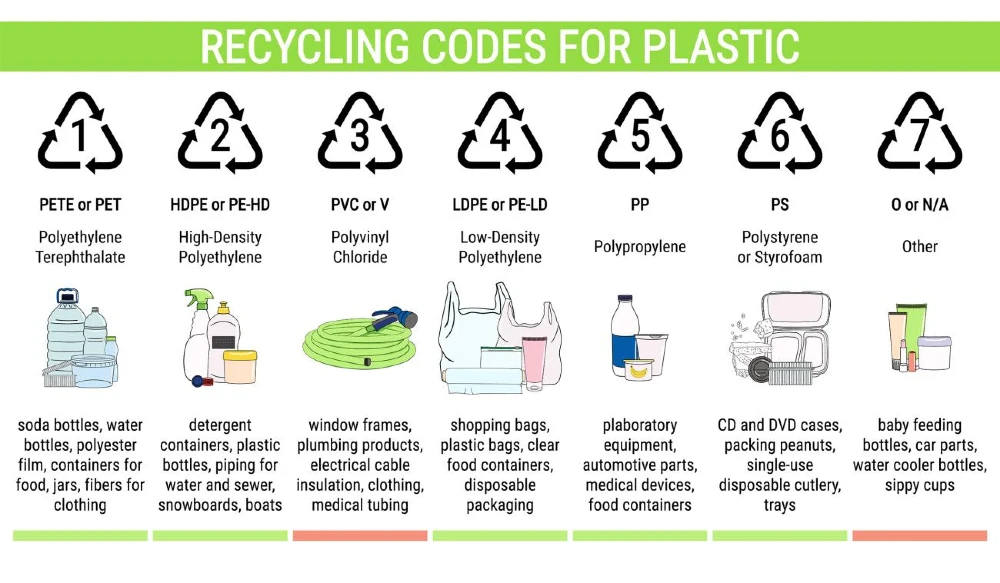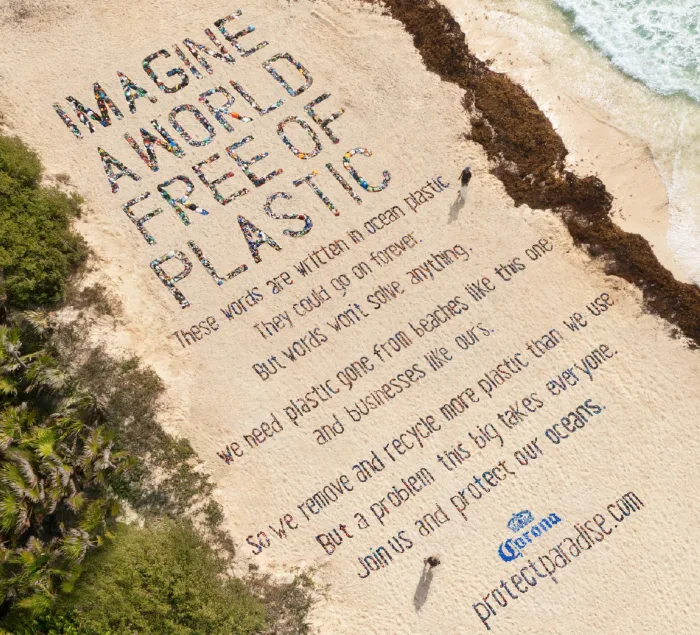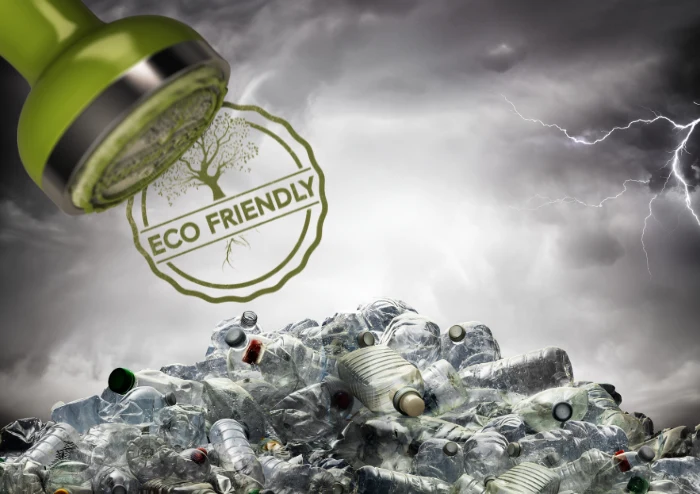Ah, yes, you’ve probably encountered these familiar products more times than you’d like to admit. They’re the brainchildren of Europe’s heavyweight food moguls – the ones you can’t seem to escape no matter where you roam.
Now, these corporate giants suddenly got all environmentally conscious, preaching about plastic waste like they’re in an eco-friendly sermon.
Every year, eight million tons of plastic waste decide to go for a deep dive in the ocean.
“We’re on a mission to make our packaging planet-friendly.” – They’ve all said it at some point!
Yep, saving the planet is the new black, darling!
But here’s the twist – these very same companies are also the unruly rock stars of plastic pollution, consistently topping the charts as the world’s worst offenders.
You know the names, right? The Coca-Cola Company. Unilever. Nestlé.
They’re the cool kids at the plastics party, setting trends and racking up the plastic waste points.
Out of the whopping 350 million tons of plastic waste that flooded the world in 2019, a meager 9% made it to the recycling club.
The rest?
Well, they went on an extended vacation, visiting oceans, soil, and even hitching rides in the air we casually inhale. Lovely, isn’t it?
But hold on, we’ve got a question itching to be answered: When these companies strut their stuff and promise to slash plastic waste, do they actually deliver, or is it all just a well-choreographed marketing dance?
To dig up the dirt, we teamed up with our buddies in the European data journalism network – because, you know, it’s more fun to investigate together.
Picture this: we dove into the depths of company records, snooped around websites, and even eavesdropped on some news reports, all to catch those plastic promises, much like butterfly catchers in a field.
Then, we transformed all our juicy findings into a spreadsheet extravaganza and gave each promise a reality check. Was it a solid commitment, a flimsy attempt, or just a tall tale?
In the grand finale, we unearthed nearly a hundred promises from these 24 players in the food game.
And let’s just say, their track record is not exactly winning any gold medals.
So, grab your popcorn, because we’re about to take you on a rollercoaster ride through the world of plastic pledges and check if these companies are truly the heroes or the villains of our plastic saga. Buckle up, it’s going to be a wild one!
Ah, let’s talk about Danone, the French food titan that’s all about dairy goodness. But hey, they’re not just milk maestros – they’re also some of the big shots in the bottled water universe. We’re talking Evian, Mizone, and the oh-so-exotic Indonesian Aqua. But here’s where the plot thickens.
Back in the ancient times of 2009, Danone put on its plastic warrior cape and vowed to use a solid 20 to 30% recycled PET plastic in its water bottles by the majestic year of 2011.
Great plan, right?
Well, plot twist – they tripped and fell flat on their recycling faces. But shhh, you wouldn’t catch a hint of that misstep.
Fast-forward to 2014, and Danone decided to sprinkle some magic dust on the situation. Their website sang a new tune: “We’re shooting for a cool 25% recycled PET by 2020.”
Sneaky move, right? They just shifted the timeline, conveniently avoiding mentioning their previous whoopsie.
But here’s where it gets interesting – across the globe, Danone waters were still lounging at a mere 19.8% recycled PET by 2020. Whoops, not quite the victory dance they were hoping for.
Now, for the grand finale, enter 2025 with a drumroll, please. Danone’s back with a dazzling new promise:
“By 2025, we’ll be flexing with 100% recycled PET for all our European brands and a decent 50% worldwide.”
After performing the recycle tango for more than a decade, Danone did manage to take a few steps forward. Applause, anyone?

But hey, Danone’s not the only show in town. Nestlé, the big kahuna of snacks and drinks, gave us a shocker.
In the recycling Olympics of 2020, they barely scraped together a measly 5% recycled PET.
Coca-Cola, that global pop star, had its European branch rocking at a slightly better 9%.
And let’s talk about Ferrero, the Italian wizards of chocolatey delights.
They waved their wand and promised us a dazzling 50% recycled PET by 2025. But here’s the twist – the actual recycled bottles didn’t make a grand entrance until 2021. Talk about fashionably late to the recycling party!
But wait, there’s more! We’ve stumbled upon this recurring theme. Companies seem to have a magic trick up their sleeves.
First, they roll out the grand promises like a red carpet event, only to later do the ol’ goalpost shuffle or vanish commitments like a magician’s disappearing act.
Among the nearly 100 promises we’ve uncovered, most are fresh-faced, popping up in the last few years, mostly setting their sights on 2025 or 2030.
But brace yourself for this reality check – for those that should’ve already strutted their eco-stuff, a whopping two-thirds either crashed and burned or decided to play hide-and-seek. Oh, the drama!
Alright, let’s peel back the curtain on those promises that actually saw the light of day. Some of them are like high-fives to the environment, but some?
Well, they’re more like fleeting marketing flings than genuine, long-term commitments.
Let’s zoom in on a little play performed by the Belgian brewery bigwig, Anheuser-Busch InBev – the geniuses behind American Budweiser, the chill vibes of Corona, and the classic thirst-quencher, Beck’s.
So, back in 2017, these beer lords decided to swoop in and rescue our oceans. They even roped in some A-list actors to star in their eco-blockbuster.

Cue the applause, right?
They tooted their own horn about exceeding expectations, flaunting a whopping 214 beach clean-ups.
But, plot twist – those clean-ups?
One-hit wonders.
No lingering protection, no forever-after fairy tale. Oh, and let’s not forget those trendy sunglasses crafted from recycled ocean plastic. And suddenly, poof, they declared victory and vanished.
Larissa Copello, the policy whiz from Zero Waste Europe, chimed in with her two cents: “Oh, the beach clean-ups? I’ve got a bone to pick with those.” “These companies sweep in, acting all noble, but they’re the ones cluttering the beaches with their packaging junk.” Instead, she’s all about shutting down the plastic pipeline at its source – “Close that tap, people!”
And now, brace yourself for a reality check. When we delved into those company pledges, guess what?
Out of nearly 100 of them, only a fifth were even aiming to slim down the plastic party in their packaging.
And most of these big promises are like the dreams of tomorrow – still waiting to be unwrapped.
It’s like a game of hide-and-seek, where the hiders are these so-called “recyclable” packaging claims.
But hold your applause. Even if the packaging is theoretically recyclable, without a way to collect and process it, it’s like a train without tracks – going nowhere.
Cue Larissa with the mic drop – these materials might end up scorched in incinerators, cozy in landfills, or, worst-case scenario, left to litter our beautiful earth.
You know what’s really the MVP here? Promising to play nice with already-recycled plastics, just like our buddy Danone did with its water bottles. Now that’s a step in the right direction.
But, my friends, companies often choose the path of least resistance.
Most of these promises are like secret admirers of PET – the plastic used for bottles, packaging, and even trendy threads. Oh, and here’s the kicker – PET is like the recycling poster child. It’s the golden child of plastics, the one that’s easy to give a second chance.
So, when companies talk the talk about being green, it’s time to check if they’re PET-friendly, or if they’re just recycling words instead of plastic.

Alright, let’s hop into our time machines and travel through the past decade. So, picture this – loads of brands have jumped onto the recycled PET bottle bandwagon.
They’re waving the “green” flag, boasting bottles that sometimes even shine with 100% recycled PET magic.
But wait a minute, hold your recyclable horses.
Turns out, only a teeny 17% of all plastic packaging is this superhero PET material. The other 83%?
Well, they’re like the ninja-level plastics, stealthy and stubborn, making recycling a major head-scratcher.
We’re talking about the likes of Polypropylene, LDPE, HDPE – or sometimes a cocktail blend of these plastics.
Remember those clingy sachets, cups, and wrappers from the beginning of this saga?
Yup, they’re like the misfits of recycling, notoriously tough to deal with.
And even if we manage to corral them for recycling, they often end up in the recycling downgrade, morphing into lowly construction materials.
So, while companies do the recycling conga with PET, they sometimes conveniently forget to mention the towering heaps of non-recyclable waste they’re sprinkling around the globe. A bit like spotlighting the good kid while hiding the troublemakers at the back of the class.
Oh, the plot thickens! During our noble quest for truth, we shot letters to all those companies sporting fuzzy or failing achievements, seeking answers.
And guess what?
Only a handful decided to join the conversation. And when they did, they whipped out the general marketing playbook, giving us a dose of the PR dance.
So, where do we pin our hopes for real change? Well, how about starting with transparency?
Cue the Ellen MacArthur Foundation, our plastic-saving superheroes.
They’ve got this cool thing called the “Global Commitment Program.” Companies join the party by pledging their hearts out about plastic packaging.
Then, the foundation swoops in, collects these promises, and keeps tabs on their progress.
But hold on, there’s a twist in the tale.
Some companies are aiming for the stars, like Unilever, trying to cut down on 50% of newly produced plastics by 2025.
But hey, then there are the more “cautious” ones, like Ferrero, with a modest 10%, or Pernod Ricard, the French wine and spirits extraordinaire, with a 5% whisper of a pledge.
And here’s where things get spicy – environmental warriors are giving these voluntary initiatives the side-eye. These companies, they’re like those magicians who keep you guessing, hiding behind their fancy pledges, while actually doing the electric slide away from real change.
The Ellen MacArthur Foundation?
Well, they’ve got a carrot but no stick. No “you’re outta here” for companies that play truant or keep their data locked up like a treasure chest.
More To Discover
- Iconic Doñana Wetlands at Risk: Strawberry Farming Threatens World Heritage Site
- Lab-Grown Oil: The Next Frontier in Sustainable Food Production?
- Carnegie Mellon Study Proves Grocery Delivery Is Less Sustainable than In-Store Shopping
- 1.5 Billion Tires Are Thrown Away Annually, A New Recycling Method Can Transform Them Into High-Value Products
So, what’s the better plan? Drumroll, please – it’s the superhero entry, European legislation!
Around the world, more countries are slapping restrictions on plastic packaging, like a plastic revolution.
The number of rules about single-use plastics – you know, those pesky bags and that villain Styrofoam – has blown up like confetti in the past decade. It’s like a global dance party, but with rules to save the planet.
Now, let’s venture into the plastic battlefield, where some African countries like Eritrea, Rwanda, and Morocco were like the pioneers donning armor back in the 2000s, introducing those bold plastic bans. Others followed suit, albeit with varying degrees of swagger.
But hey, the European Union recently stepped onto the catwalk, rocking some seriously ambitious plastics legislation. It’s like a plastic revolution, people!
Cue the Single-Use Plastics directive – it’s the boss around here. It basically says, “No more plastic bag, cutlery, or straw shenanigans in the EU markets.” And that’s not all – it’s throwing some serious shade at plastic recycling targets too.
By 2025, PET bottles need to flex at least 25% recycled swagger, and by 2030, it’s time to level up to 30%.
Now, let’s be real – these EU goals aren’t exactly the full circle of awesomeness, but environmental champions like Changing Markets give them a nod of approval. Why? Well, a “low but steady” goal on paper is better than a grandiose but airy-fairy promise.
Oh, and here’s the sizzling hot truth – change isn’t just knocking on the door, it’s practically kicking it in.
Global plastics production?
Still on a growth spurt, set to nearly triple in the coming decades. But hang tight, because we’re on a mission – a mission to slow down this plastic parade.
It’s time to roll out supercharged recycling systems and buckle down with stricter regulations. We’ve got the receipts to prove that the “voluntary commitment” party is missing the real action.
Companies?
They whip out new dance moves only when they’re under the spotlight of legislation, with public eyes watching and consumer voices echoing.
But don’t blink, because we’re setting our compass to 2025. We’re gonna march back in, armed with data and determination, to see if these companies deliver on their next batch of plastic vows.
Some of these commitments?
They won’t just be optional invitations to the green party – they’ll be mandatory headliners, at least within the EU.
So, my fellow Earth enthusiasts, let’s raise our reusable cups to change that’s no longer a guest but is now storming the plastic palace.
Let’s embrace the EU’s bold moves and keep the pressure on. And remember, the road to a plastic-free paradise may be winding, but it’s a journey we’re taking together – one green step at a time.



















